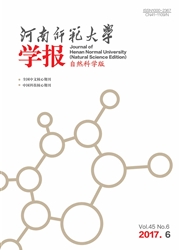

 中文摘要:
中文摘要:
利用ISSR分子标记技术,对采集于长垣天然文岩渠(野生群体)、河南省水产科学研究院(黄河品系Ⅰ群体)、小浪底水库(野生群体)、河南黄河鲤鱼良种场(豫选黄河鲤群体)的4个群体黄河鲤的120个个体的遗传多样性进行了分析.8个ISSR引物共获得64个扩增位点,其中多态位点31个,多态位点比例为48.44%.4个群体的多态位点比例分别为14.06%,32.81%,34.38%和20.31%,遗传距离分别为0.0576、0.1657、0.1674和0.0800,Nei基因多样性分别为0.0538、0.1099、0.1308和0.0723,Shannon信息指数分别为0.0784、0.1669、0.1923和0.1072.文岩渠群体与黄河品系Ⅰ群体遗传距离最远(0.1717),与小浪底水库群体遗传距离最近(0.0558).表明这些群体间发生了较弱的遗传分化.UPGMA聚类结果为文岩渠群体与小浪底群体先聚在一起,其次是与豫选黄河鲤,最后与黄河鲤品系Ⅰ相聚.用AMOVA进行遗传变异方差分析得到遗传变异固定指数(Φst=0.0179,P〈0.05),显示黄河鲤大部分变异(98.21%)发生在群体内,群体间变异较小(1.79%).说明人工选育群体的遗传结构尚未发生明显变化.
 英文摘要:
英文摘要:
ISSR(Inter Simple Sequence Repeat)is applied to investigate the genetic diversity of four populations of Cyprinus carpio haematopterus from Wenyanqu(wild populationA),Huanghepinxi(artificial selecting population B),Xiaolangdi(wild populationC),and Yuxuanhuangheli(artificial selecting population D).A total of 64 reproducible DNA fragments are amplified by 8 ISSR primers from all the 120 individuals.31 fragments are polymorphic,percentage of polymorphic loci is 48.44%.The percentages of polymorphic loci of four populations are 14.06%,32.81%,34.38%,and 20.31%,respectively.The genetic distances are 0.057 6,0.165 7,0.167 4,and 0.080 0,respectively.The Nei's gene diversity are 0.053 8,0.109 9,0.130 8 and 0.072 30,respectively.Shannon's information indices are 0.078 4,0.166 9,0.192 3 and 0.107 2,respectively.The farthest genetic distance occurr between A and B populations(0.171 7),the nearest occurred between A and C(0.055 8).UPGMA cluster analysis based on Nei's genetic distances showed that A and C population assembled one group first,and then does D population,the last does B population.It indicates that the genetic diversity of Cyprinus carpio haematopterus populations have lower differentions.AMOVA procedure is used to obtain fixation index(Φst=0.017 9,P〈0.05),showing that most variances are from among populations(98.21%)and lesser variance within populations(1.79%).That is to say,artificial selecting populations do show marked decrease in genetic diversity compared with the wild populations in the present.
 同期刊论文项目
同期刊论文项目
 同项目期刊论文
同项目期刊论文
 期刊信息
期刊信息
